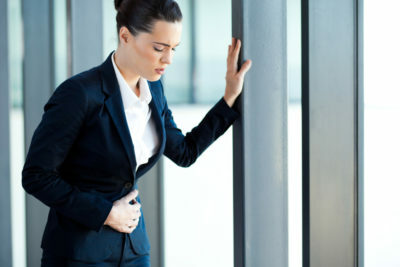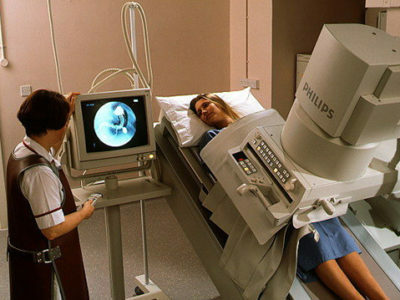1 Etiology of the disease
The main causes of the development of pseudomembranous colitis are the long-term use of antibacterial agents( antibiotics, sold in the form of tablets, are the most common pathology, and injection drugs may lead to it).The long use of Penicillin, Erythromycin, Lincomycin, Clindamycin, rarely - Cephalosporins, can lead to the development of pseudomembranous enterocolitis, pathogenically affecting the intestinal microflora.

Recommended to read
- Diet for colitis of bowel
- Symptoms and treatment of enterocolitis in adults
- Symptoms of ulcerative colitis
- Effective remedy for gastritis and gastric ulcer
The disease can also occur after taking( prolonged) cytostatics and laxatives. Frequent use of these drugs leads to disruption of healthy intestinal microflora, as a result of which useful and necessary microorganisms perish, and the pathogenic microbe is activated( Clostridium difficile).Normally, these bacteria occupy in the body a very small percentage of the total - no more than 0.4%.Bacteria can also be found in soil, in the organs of the gastrointestinal tract of wild and domestic animals. It is these pathogenic microorganisms that release a special kind of toxic substance, which leads to the destruction of microflora and mucous organs of the digestive tract.
Most susceptible to the development of pseudomembranous enterocolitis:
- people whose age is over 60;
- isolated patients who are in special hospital conditions;
- conducted on the eve of surgery on one of the organs of the digestive tract;
- reception of cytotoxic agents;
- heart disease;
- chronic diseases occurring in the intestine;
- is an infectious disease.
Pseudomembranous enterocolitis may manifest itself against the background of oncological processes and in the presence of renal insufficiency. When the first symptoms appear, you need to see a doctor and start treatment in a timely manner.
-
 IMPORTANT TO KNOW! Gastritis? Ulcer? To have a stomach ulcer not turned into cancer, drink a glass. ..Read the article & gt; & gt;
IMPORTANT TO KNOW! Gastritis? Ulcer? To have a stomach ulcer not turned into cancer, drink a glass. ..Read the article & gt; & gt;
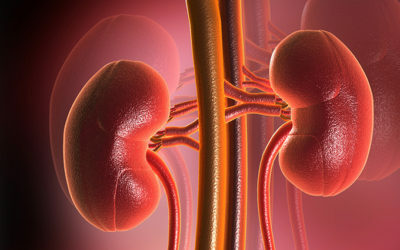
2 Symptoms of the pathology
At an early stage, colitis symptoms manifests itself in the form of diarrhea, which develops after taking antibacterial drugs. If the drug is canceled, the symptoms of colitis are eliminated on their own, without the use of special therapy. Severe and moderate form of the disease can develop not only after prolonged use of antibiotics, but also after their withdrawal( about 2 weeks).

The first signs of the disease are manifested in the form of stool and intoxication of the body:
- watery stool;
- feces in the form of rice broth;
- tachycardia;
- paresthesia;
- decreased muscle tone;
- convulsions;
- pain in the head region;
- loss of appetite;
- body temperature rise;
- presence of cramping pains.
With enterocolitis, the pain is localized in the lower abdomen on the left. But at the same time it can radiate throughout the abdominal cavity. Characteristic pain syndrome with enterocolitis can not be called, because a number of other diseases - colitis, gastritis, peptic ulcer, etc., can also manifest itself. To determine the cause of the symptoms, it is necessary to visit the doctor.
Very rarely, but there are times when enterocolitis develops lightning fast. As a result of toxic expansion of the large intestine and its further perforation, a person may die before the arrival of an ambulance, literally in a matter of minutes. The organism in this case quickly dehydrates( as with cholera) and the person comes to a stop of the heart. In this case it is practically impossible to help the patient.
-
 Gastroenterologist. VAZHENOV: "I beg you, if you started to worry about abdominal pain, heartburn, nausea, do not do gas in any way. .."Read more & gt; & gt;
Gastroenterologist. VAZHENOV: "I beg you, if you started to worry about abdominal pain, heartburn, nausea, do not do gas in any way. .."Read more & gt; & gt;

3 Diagnosis of the disease
Before starting treatment, the doctor will necessarily conduct a patient examination, starting with the collection of symptoms. If suspected of pseudomembranous colitis, the doctor will prescribe the delivery and passage:
- of the general blood test. If there is this disease, then there will be signs of severe leukocytosis, an increase in ESR.
- General analysis of urine.
- Coprology( increased white blood cell count will indicate the presence of pseudomembranous colitis).
- Bacteriological analysis of feces( to confirm the diagnosis make a culture of feces for the presence of a bacterium that provokes colitis).
- Endoscopic examination. Recto-manoscopy helps to determine the lesion of the thick intestine, namely, its lower part, and colonoscopy is used in case of a suspected larger lesion located in the upper parts. On diagnosis with pseudomembranous enterocolitis the mucous membrane will be covered with a touch of gray-yellow shade. Irrigoscopy is not prescribed for examination in order not to damage the intestine.
- Biochemical blood test. At the last stages, protein, sodium, potassium, calcium, albumin decreases.
TIP FROM THE MAIN GASTROENTEROLOGIST
Korotov SV: "I can recommend only one remedy for the rapid treatment of Ulcer and Gastritis, which is now recommended by the Ministry of Health. .." Read testimonials & gt; & gt;
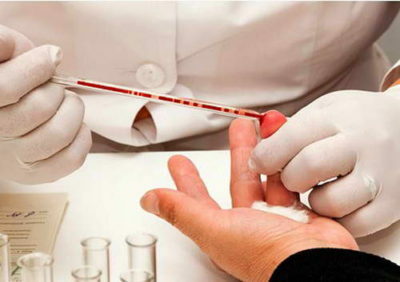
This extensive diagnosis helps to make sure that this is the diagnosis, and at what stage the disease is. This will help the doctor choose the right treatment that will save the patient's life and health.
4 Treatment measures
Treatment of pseudomembranous colitis is carried out using a variety of means. The treatment regimen depends on the stage of the disease and the overall health of the person. As a treatment, you must prescribe a diet and use of medications that will help eliminate unpleasant symptoms, relieve inflammation and contribute to the recovery of the mucous membrane and microflora.
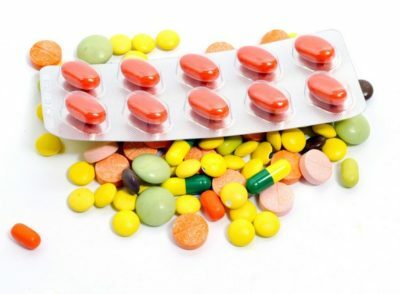
First of all, it will be necessary to cancel all used antibacterial agents and other medications that could cause the development of pathology.
This will help stop the progression of the disease and avoid the development of unpleasant symptoms, the treatment of which will not always be effective in the last stages.
But without antibiotics can not do in severe cases of the disease. Doctors prescribe Metronidazole. If metronidazole is ineffective or if it is intolerant, Vancomycin is prescribed. Both drugs are very similar in effectiveness, but Vancomycin is much more expensive. The course of treatment with these antibiotics is basically 10 days.
Due to etiotropic treatment, a pathogenic microorganism that provokes the development of the disease will be suppressed and eliminated. Applied in the treatment of the disease and Trichopol, Enterofuril, for the treatment of dysbacteriosis appoint Entererozherminu, Hilak-forte, Yogurt, etc. If there are no unpleasant symptoms when pseudomembranous colitis is detected, treatment can be avoided. The main thing is to cancel all used drugs that are part of the group of disease provokers.
If the pathology develops sufficiently serious, the patient is hospitalized and an injectable infusion of liquid and glucose is prescribed. When the intestinal walls are penetrated, the patient is shown urgent surgical intervention, which, if carried out in time, can save a person's life.
As treatment appoint drugs that help cope with the symptoms of intoxication, eliminate dehydration and restore metabolism. Together with medicamental therapy, folk remedies are used, which together with medications will have a positive effect.
5 Diet as a way to treat
Diets, namely proper nutrition, are prescribed for all types of diseases of the digestive tract. A diet is prescribed from the first days of disease detection, with the first few days the patient's diet should consist of mucous porridges, kissels and dried bread. In the most acute period of development of pathology from food intake, it is necessary to abstain, for about 10 hours.
In order to replenish the body's fluids, Regidron is prescribed as a treatment. For a day you need to drink at least one sachet of a product diluted in water. Rosehips, blueberries or bird cherries can be brewed and drunk in the form of warm tea 30 minutes before meals. Consumption of coffee, cocoa, chocolate, milkshakes and sugar should be excluded from the diet completely.
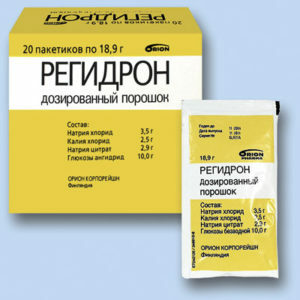
Next, a specific diet plan for the first week is prescribed, at which it will be necessary to eat sour-milk dishes with a low percentage of fat content. You can eat liquid porridge, lean poultry, boiled or cooked on steam. Boiled meat or fish broth in the diet should not be, but light vegetable soups are welcome.
Cabbage and other vegetables that contain fiber should be removed from the menu for at least 3-4 weeks from the start of therapy. Remove from the diet you need sour vegetables, fruits and juices from them( tomatoes, tomato juice, plums, gooseberries, currants, lemons, etc.).Alcohol, spicy and any other seasonings, chocolate, smoked, fried and salty dishes should be removed from the diet for at least 5-7 months.
All products should be taken in small portions, in a warm and crumbed form. Over-eating is unacceptable at the time of therapy, as it can aggravate the symptoms and course of the disease. Breakfast should begin with light but nutritious dishes( omelet, cottage cheese or oatmeal, tea), in 2-3 hours you can eat light dessert( acceptable in this period), and in the lunchtime a nutritious and most rich meal( fish meatballs, steamcutlets, cereals, compote, rusks, fruit, stew, vegetable soups).After lunch, after a few hours, you can have a bite of baked fish, boiled vegetables and dried bread. For dinner, you can eat protein and carbohydrate food, but in very small quantities.
The last meal should be 3 hours before bedtime. With a strong desire, you can drink a herbal decoction or eat an apple baked with honey.
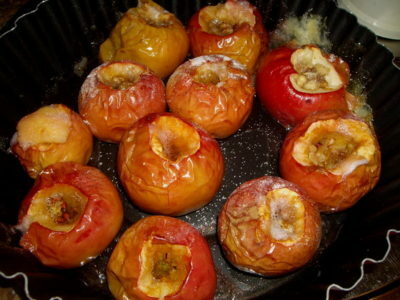
Completely from the ration it is necessary to exclude the use:
- of bread, macaroni and other flour products;
- of sweets;
- fatty meat and fish;
- bean vegetables and some fruits;
- alcohol, soda, juices;
- sauces, marinades, condiments, canned food.
Adhere to strict nutrition will be the first month, after this diet can be supplemented. The defeat of the intestinal mucosa - colitis, enterocolitis, often manifests itself repeatedly if you disrupt the regular schedule of food intake and use large amounts of prohibited foods.
6 Possible complications and recovery prognosis of
The most serious complication of pseudomembranous colitis is perforation of the intestinal mucosa. Due to strong intoxication in the intestine accumulate gases that inflate the intestine( this can be seen with the naked eye).Clinical symptoms are a rise in body temperature, a strong deterioration in human condition, a violation of the act of defecation. In the presence of such pathology, the patient is urgently operated on, removing the affected part of the intestine.
The prognosis for this disease can be positive if the disease was detected at an early stage and treated on time. With more severe lesions, the disease can be treated well, but in most cases it goes into a chronic stage. With extensive bowel damage and surgery, survival is very low.
To prevent the development of acute damage to the intestinal mucosa, it is always necessary to use drugs against dysbacteriosis together with antibacterial agents. People who are at risk for developing the disease should limit the intake of medications that can trigger the onset of the pathological process.
With the first unpleasant symptoms, you do not need to stop pain yourself. It is necessary to call an ambulance and immediately go to the hospital for examination and further treatment.
- 1 Etiology of the disease
- 2 Symptoms of the pathology
- 3 Diagnosis of the disease
- 4 Treatment measures
- 5 Diet as a method of therapy
- 6 Possible complications and recovery prognosis
Pseudomembranous colitis or enterocolitis is an inflammation that occurs in the intestinal mucosa. The disease develops on the background of a long reception of antibiotics, in the form of a strong dysbiosis, with all the resulting symptoms. Pseudomembranous colitis can appear at any age, and in each case it will pose a great danger. During the illness, not only the walls of the intestine, but also the walls of the stomach become inflamed. In this case, their puffiness may develop - fibrous plaque.
Do you have gastritis?
GALINA SAVINA: "How easy is it to cure gastritis at home for 1 month." "A proven method is to write down a recipe. ..!"Read more & gt; & gt;
When pseudomembranous colitis occurs in acute, neglected form, the symptomatology will be extremely unfavorable: increased intoxication, dehydration, disturbance of metabolic processes. A severe lesion in the large intestine will eventually lead to the development of perforation.


